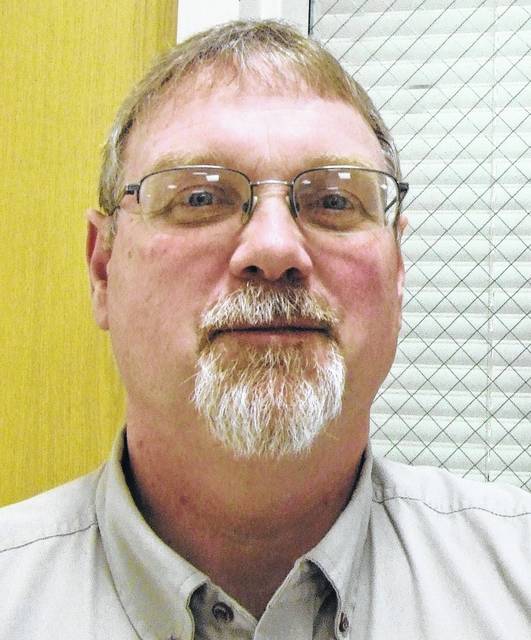
I start this week’s column with a quote by B.C. Forbes: “It is only the farmer who faithfully plants seeds in the spring, who reaps a harvest in the autumn.”
Harvest is getting real close for many farmers in the county. Have you noticed all the soybean fields turning yellow? It’s a sure sign many farmers will be very busy with harvest real soon. It seems like some of these fields have turned yellow in a matter of hours.
As harvest begins, be sure to remind yourself we will see more farm equipment on our roadways. That will mean experiencing slower moving traffic, large equipment that will be difficult to pass and understanding this traffic may be on our roadways at all hours of the day.
Please plan for extra time to get to and from places, be smart when driving and be extra patient. We want our roadways to be safe for everybody.
Besides our crop farmers being busy, so too are many of our livestock producers. Small ruminant production continues to grow across the nation as the market for this industry remains strong.
Small ruminants, including sheep and goats, are two livestock species that are most easily adapted to any type of production system. Regardless if you are someone that is interested in just getting into the industry or a seasoned veteran, I encourage you to attend the latest small ruminant production workshop.
Sponsored by the OSU Sheep Team, The Ohio State University Extension, Wilmington College, and Ohio Sheep and Wool Program, I’d like to invite you to the Small Ruminant Production Workshop – Addressing Needs for a Successful Production Season. This workshop will be held on Friday, Oct. 4 from 9:0 a.m.-3 p.m. at the Wilmington College Academic Farm.
Over the course of the day, attendees will hear from Extension specialist and Animal Science faculty and staff members covering an array of topics including flock and herd management, facilities and handling, nutrition and health, forages and marketing, as well as carcass quality and fabrication.
For all ruminant species, this year will put even the most experienced shepherds and herdsmen to the test as making and securing high quality forages has been a challenge. This course will help provide insight upon how to utilize these feedstuffs, how to prepare and manage your flocks and herds over the course of a production year, the contributing factors that favor carcass quality, and much more!
For those interested in attending, please contact Tony Nye via email at [email protected] or call at (937) 382-0901. The cost for attendance is $15. A registration form can be found on our Clinton County Extension website at Clinton.osu.edu. Registrations are due by Sept. 27.
Finally, before we get into winter months, I recommend doing some forage testing.
According to Christine Gelley, OSU Extension Educator, Agriculture and Natural Resources, Noble County, testing the hay you are feeding is well worth the price of sample analysis. Collecting a sample is not complicated and typically results are available from the lab within two weeks.
Whoever you chose to go through, be sure to select the analysis package that will give you the detailed results you desire. The package that costs the least will probably still leave you guessing. My typical suggestion is to select a test that will give you values for moisture, crude protein (CP), acid detergent fiber (ADF), neutral detergent fiber (NDF), total digestible nutrients (TDN), and Relative Feed Value (RFV).
Once you receive the results of your analysis, the challenge of interpreting the values arises. How do you know what values are good or bad?
Your hay test results will list values on a dry matter (DM) and an as-fed basis. Nutrients will appear to be higher for DM basis, because all the remaining water (% moisture) in the hay has been factored out. For CP, values of 8% or greater are desired.
For ADF, lower is better. Increased ADF values equal decreased digestibility. Neutral detergent fiber is the amount of total fiber in the sample, which is typically above 60% for grasses and above 45% for legumes.
As NDF increases, animal intake generally decreases.
For TDN and RFV, the greater the values, the more desirable the forage. These values are useful for comparing your forage to other feeds available on the market. Once you have these values compiled you can start formulating rations based on nutritional values of the hay.
Always consider the needs of your animal. Stage of life, current weight, desired weight, and environmental conditions are all important factors.
Gelley reminds producers that hay tests may not reveal ideal results and they can vary drastically between cuttings. That is the reality of attempting to manage nature.
We can rarely do anything under ideal circumstances, but we do the best we can. As you look ahead to the next growing season and putting up hay once again, do everything you can to efficiently improve forage quality and nutritive value of your stored resources.
The better the nutritive value of your forage, the less you will need to supplement and the more money you can keep in your pocket.
Testing and formulating rations takes some effort, but once it becomes routine it will come with greater ease.
Tony Nye is the state coordinator for the Ohio State University Extension Small Farm Program and has been an OSU Extension Educator for agriculture and natural resources for over 30 years, currently serving Clinton County and the Miami Valley EERA.


